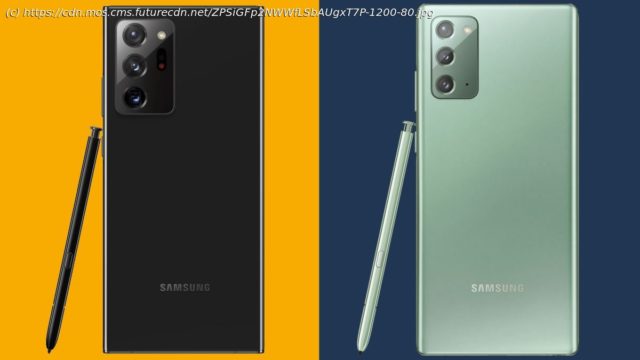The Samsung Galaxy Note 20 versus the Samsung Galaxy Note 20 Ultra: feature and price differences in the stylus-packing flagships
The Samsung Galaxy Note 20 line has been unveiled, and consumers have two choices: the baseline Galaxy Note 20 versus the top-specced (and top-priced) Galaxy Note 20 Ultra. So what’s the difference? This simplifies things a bit, as either Note 20 option caters to a more specific consumer demographic than the three-phone Galaxy S20 line. Do you want a stylus-packing handset and won’t miss a few features to ensure a cheaper price? Go for the standard Note 20. Do you want an absolute top-of-the-line device with the best appearance? Pick up the Note 20 Ultra. But it’s worth discretely comparing both options to understand what you’re giving up in the Note 20 and what you’re paying extra to get in the Note 20 Ultra. Both the Note 20 and the Note 20 Ultra were announced on August 5,2020, and will be available around the world on August 21. The 5G Note 20 starts at £949 / AU$1,649 in the UK and Australia with 256GB of storage, while the baseline version in the US costs $999 and packs 128GB of space. The Note 20 is also available in a 4G-only version for £849 / AU$1,499, but will only be sold in the UK and Australia. As the lower-cost model, the Note 20 gets the more fun colors, including the experimental flagship hue of this cycle, Mystic Bronze, along with Mystic Green and Mystic Grey. The 5G Note 20 Ultra is notably pricier, starting at $1,299 / £1,179 / AU$1,849 for the baseline model – which gets you 128GB of storage in the US and 256GB of storage in the UK and Australia (and 12GB of RAM in all regions). Bumping the space to 512GB ups the price to $1,449 / £1,279 / AU$2,199. Finally, Australians have the option of buying a cheaper 4G-only option for AU$1,849, but that model isn’t available elsewhere. The Note 20 Ultra comes in a more premium color set of Mystic Bronze, Mystic Black and Mystic White. The Note 20 and Note 20 Ultra may look very similar, but they surprisingly diverge in material quality. The base Note 20, for instance, has a flat front display and a polycarbonate back cover, making it the first flagship in years that lacks a glass rear. The material has a brushed effect, which Samsung calls ‘glasstic,’ which gives it a ceramic feel. The Note 20 Ultra is glass front-and-back, with the curved ‘Infinity’ display that’s characteristic of Samsung flagships. It’s the larger of the two phones by a few millimeters in length and width, nearly matching the older Note 10 Plus in size, with a colossal 6.






